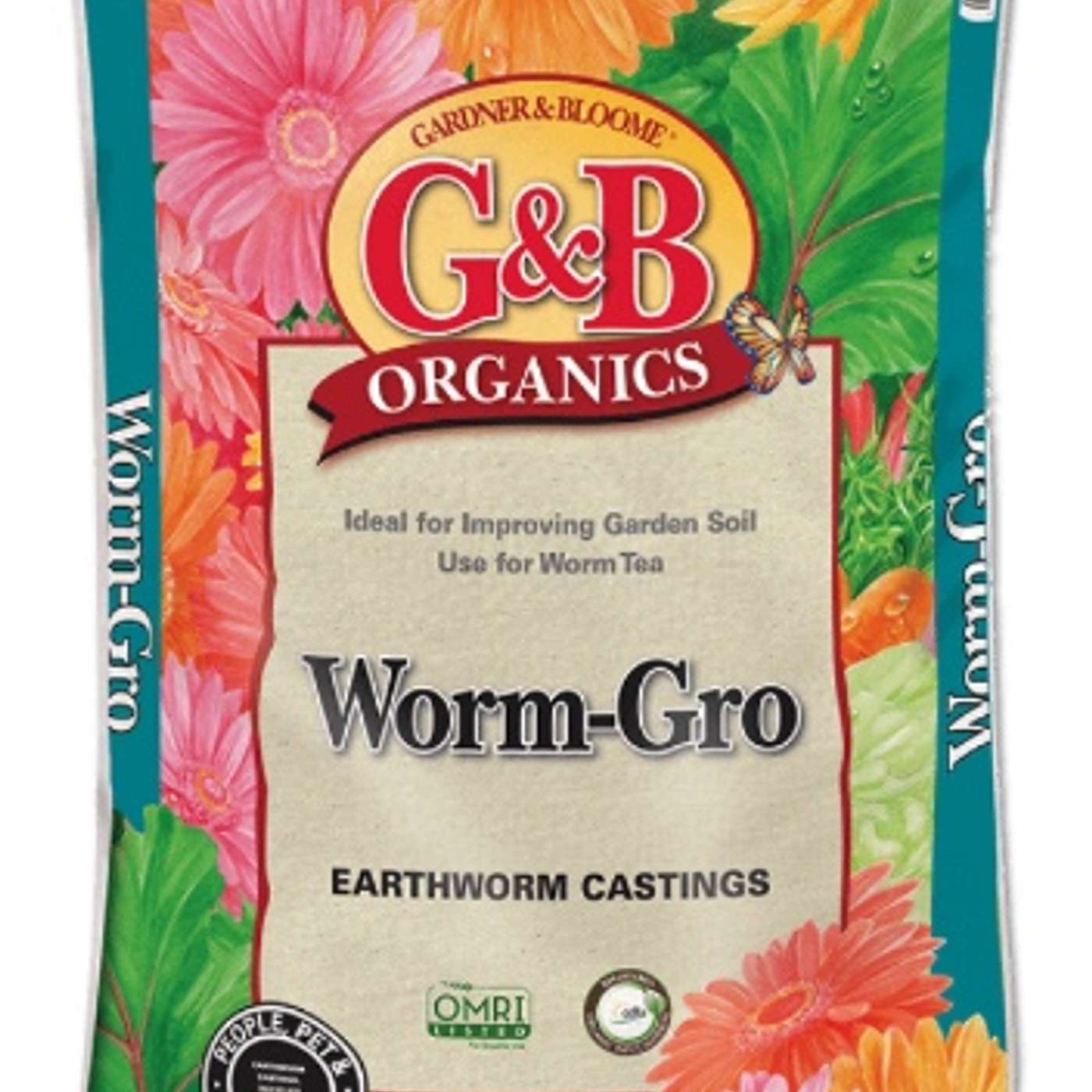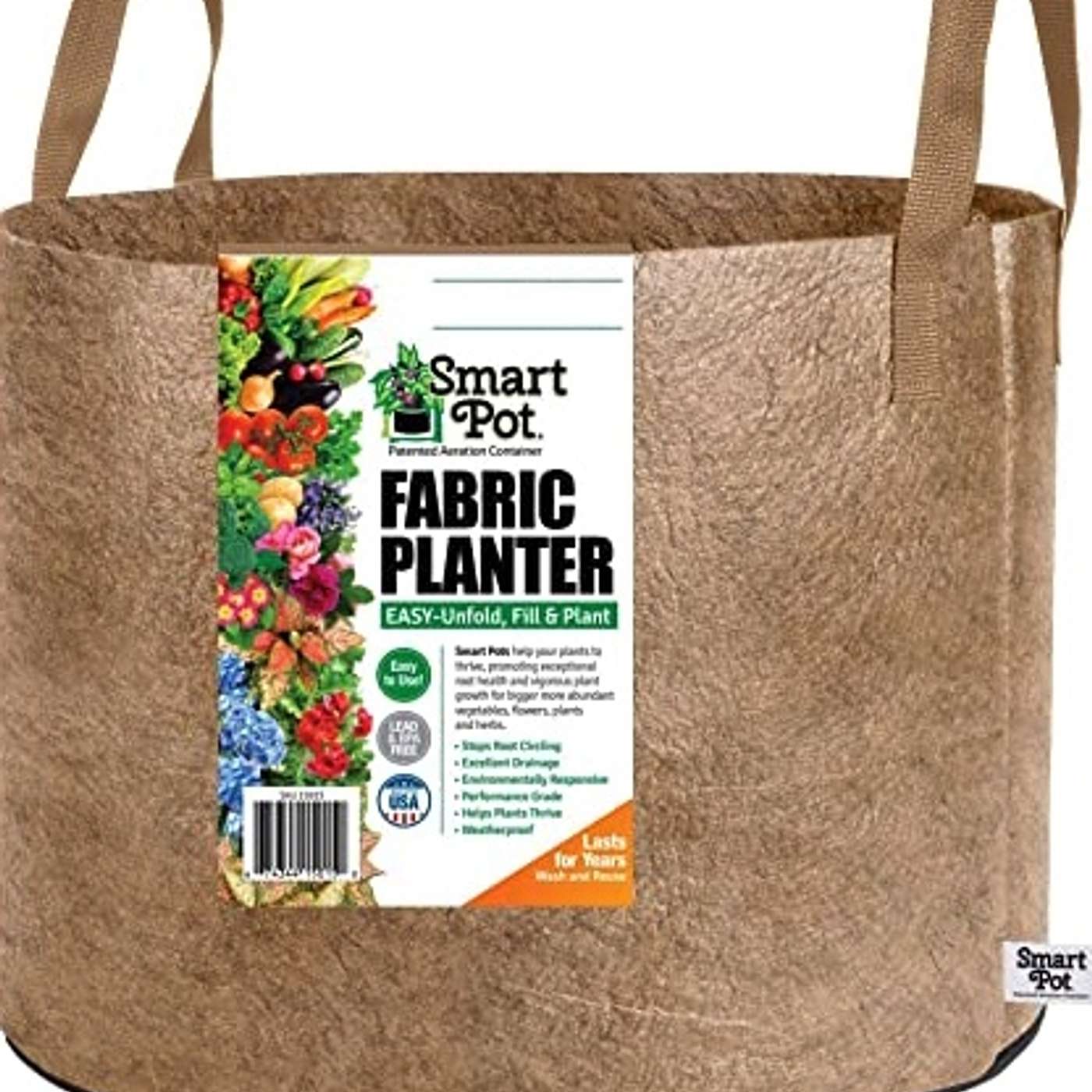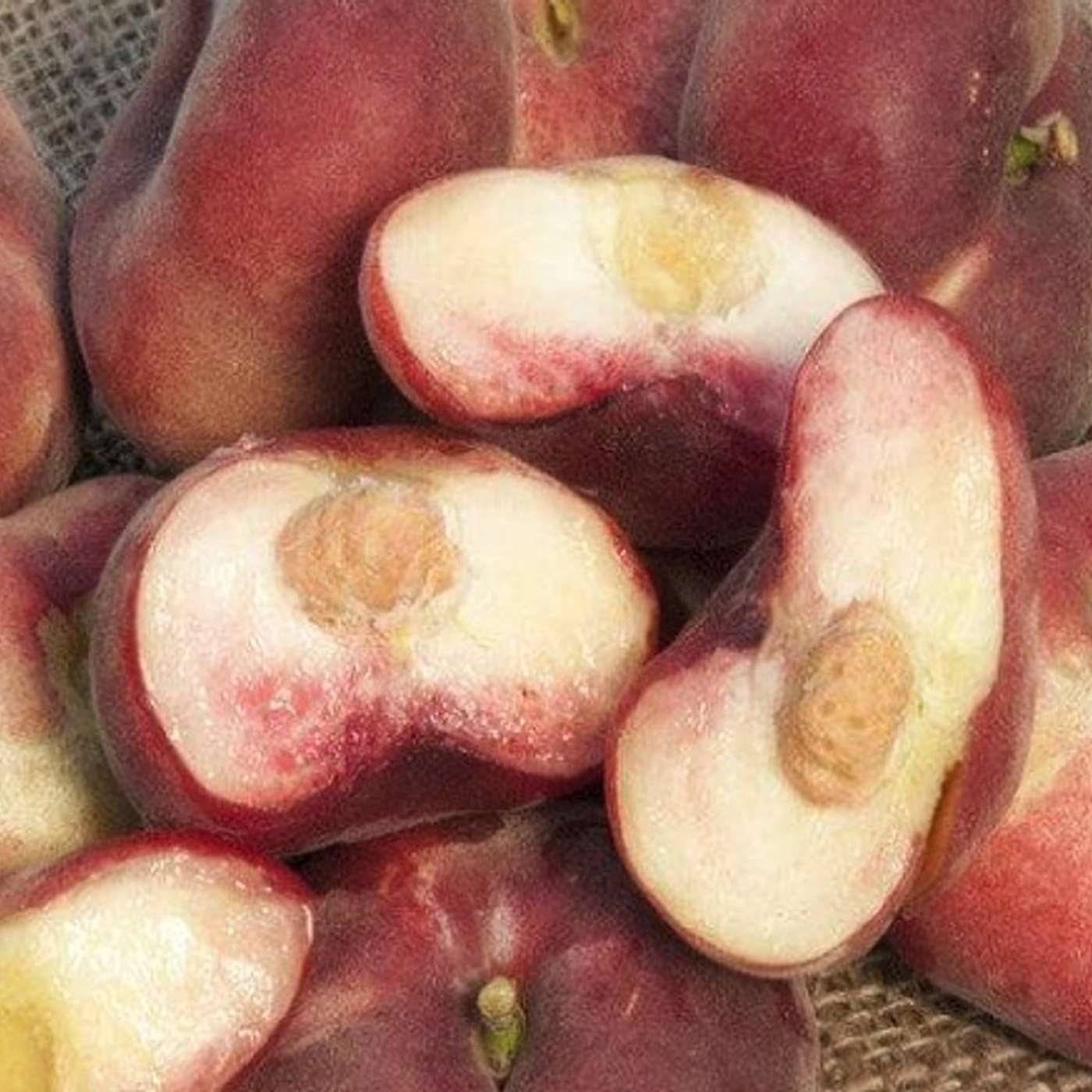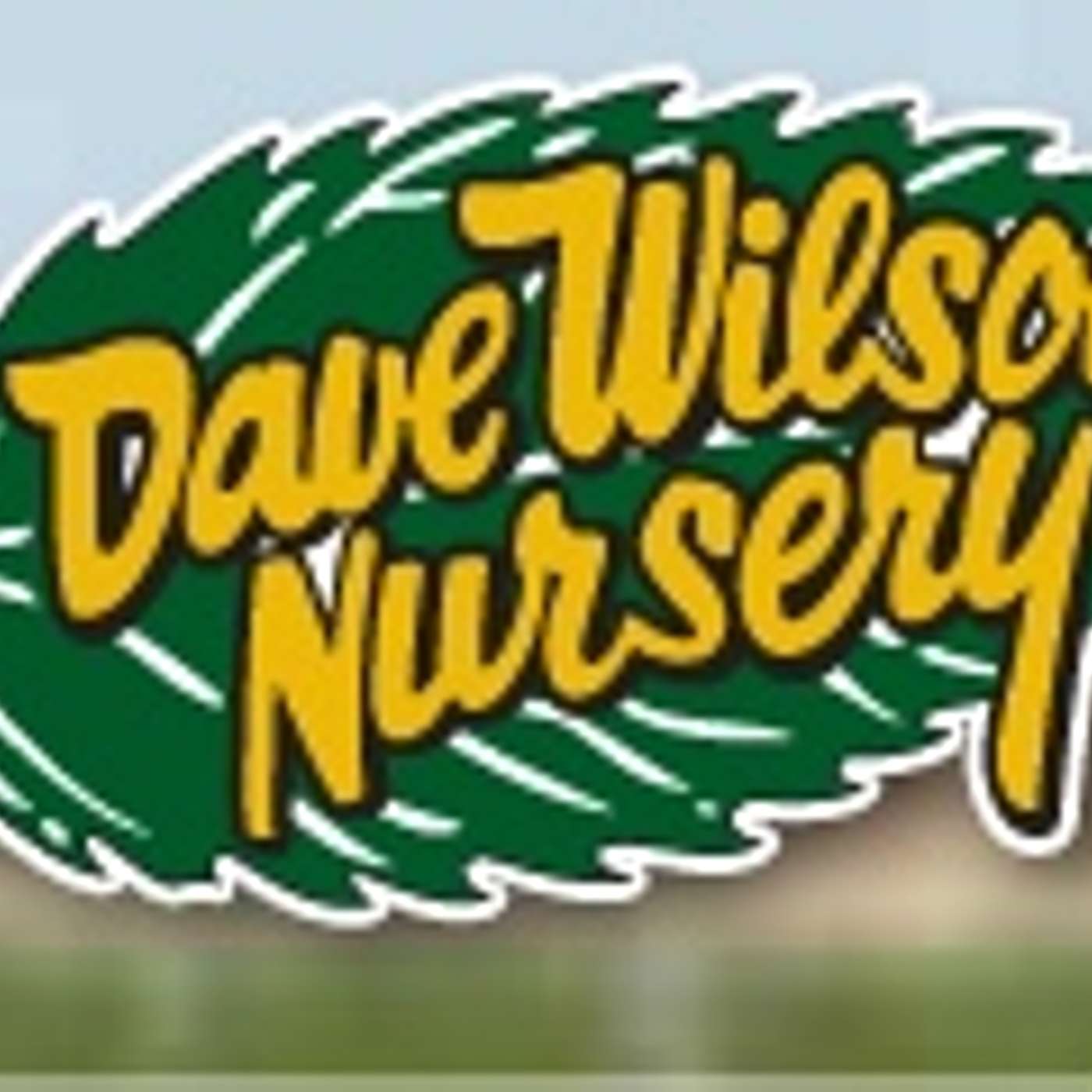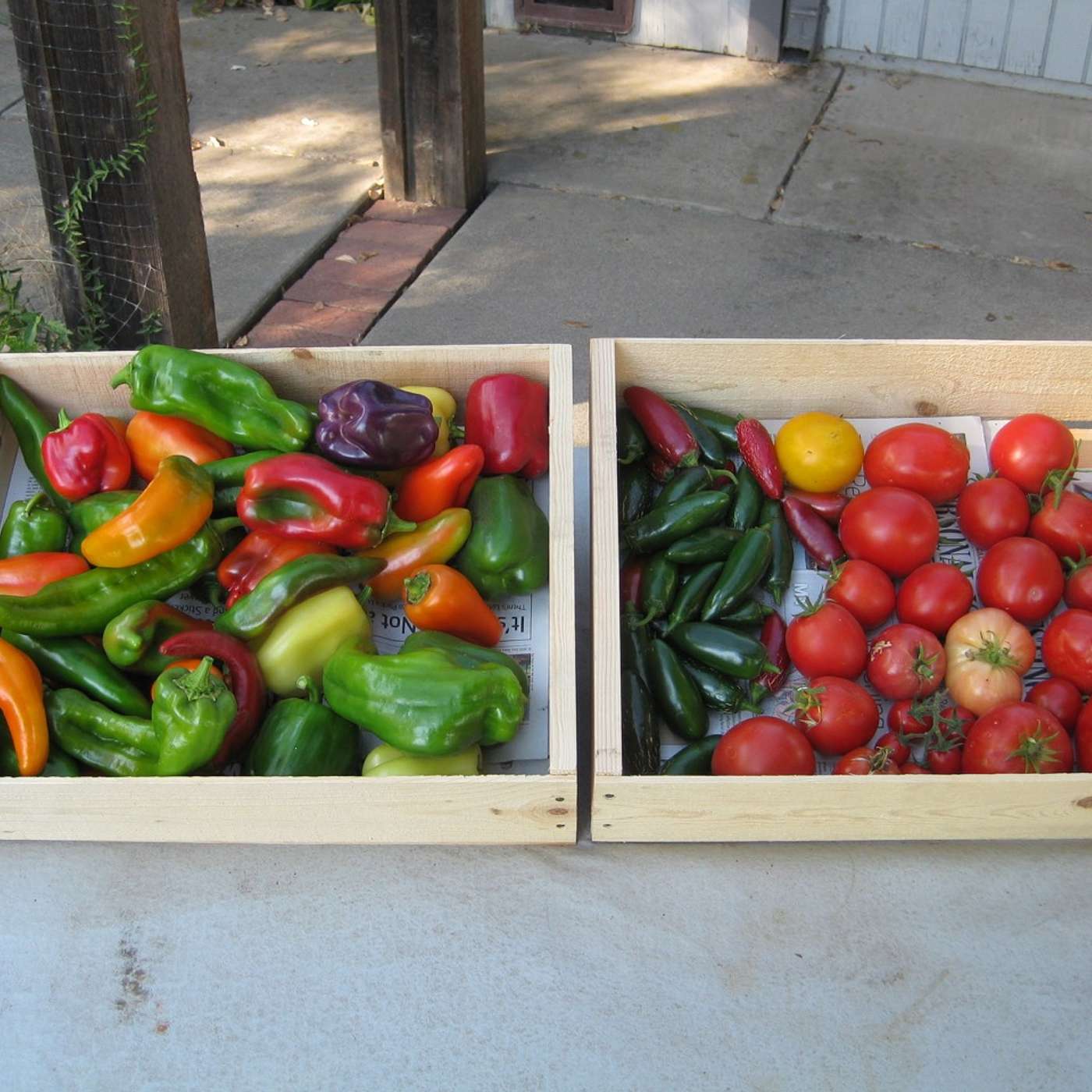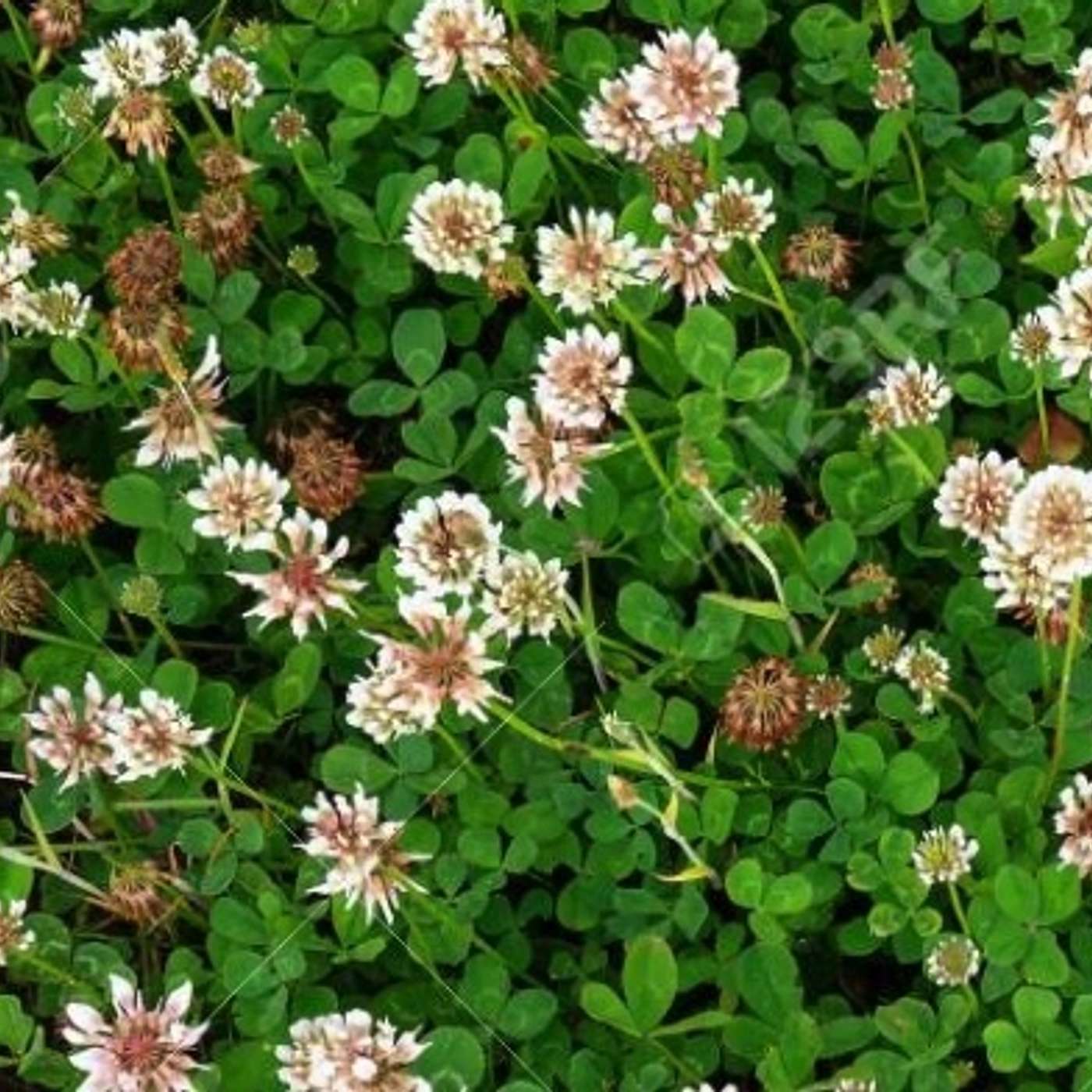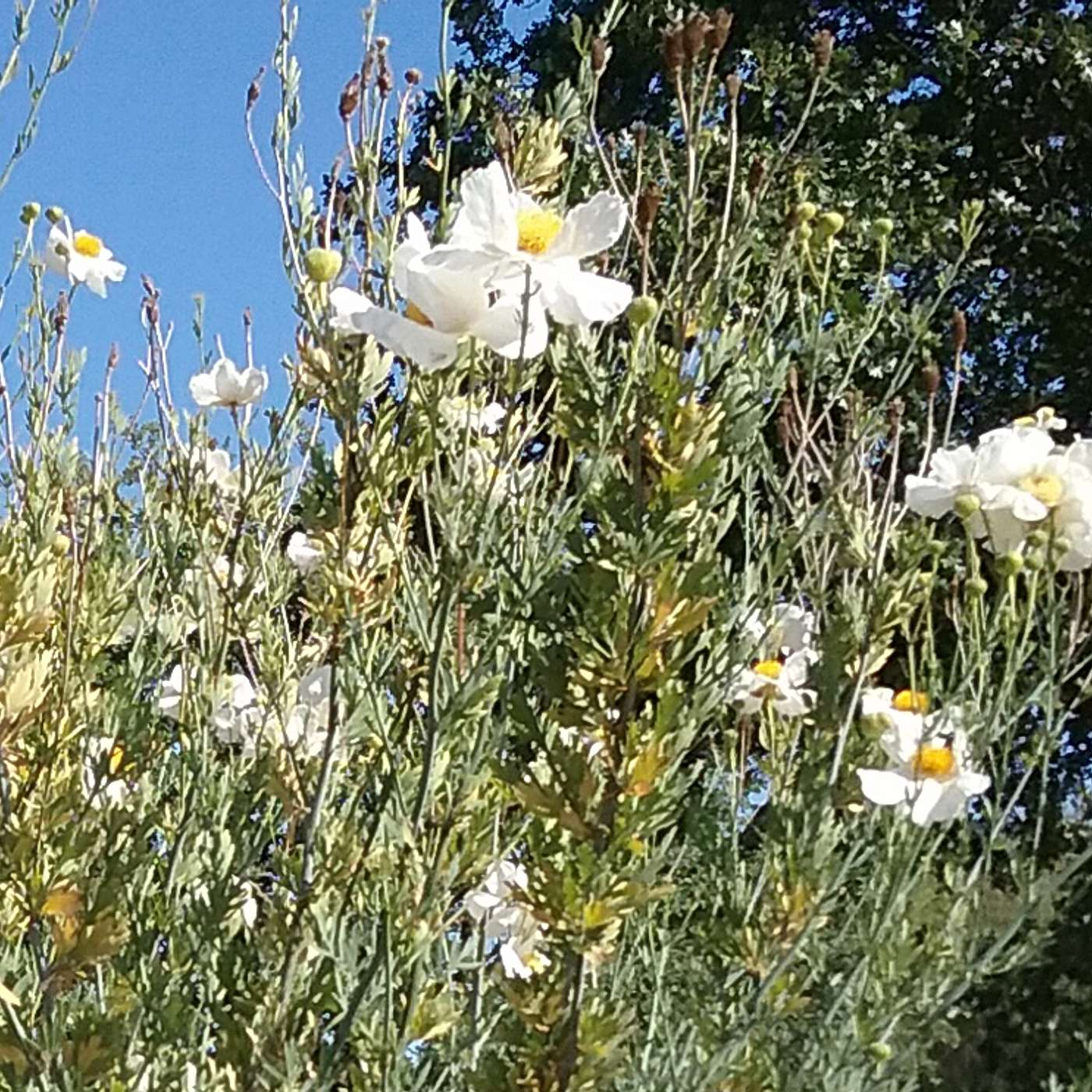
Garden Basics with Farmer Fred
Tips for beginning and experienced gardeners. New episodes arrive every Friday. Fred Hoffman has been a U.C. Certified Master Gardener since 1982 and writes a weekly garden column for the Lodi News-Sentinel in Lodi, CA. A four-decade fixture in Sacramento radio, he hosted three radio shows for Northern California gardeners and farmers: The KFBK Garden Show, Get Growing with Farmer Fred, and the KSTE Farm Hour. Episode Website: https://gardenbasics.net
Garden Basics with Farmer Fred
107 Worm Castings. Poppies. Supermarket vs Homegrown Nutrition
You’ve seen it with the bagged soils goods at the nursery: worm castings. What role should they play in your garden?
The Plant of the Week is a big family of different plants: the poppy. There’s probably one, or two, that are right for you.
Just because a homegrown fruit is smaller than what you might see at a grocery store doesn’t mean it’s inferior. On the contrary, that smaller, homegrown fruit may be healthier for you. We’ll explain.
It’s all on episode 107 of the Garden Basics with Farmer Fred podcast, brought to you today by Smart Pots and Dave Wilson Nursery.
And we will do it all in under 30 minutes. Let’s go!
Pictured:
California poppies
Links:
Smart Pots
Dave Wilson Nursery / Tom’s Picks
Farmer Fred Rant: Supermarket vs Homegrown Nutrition
Worm Castings
UC Davis Arboretum
More episodes and info available at Garden Basics with Farmer Fred
Garden Basics comes out every Tuesday and Friday. More info including live links, product information, transcripts, and chapters available at the home site for Garden Basics with Farmer Fred. Please subscribe, and, if you are listening on Apple, please leave a comment or rating. That helps us decide which garden topics you would like to see addressed.
Got a garden question? There are several ways to get in touch:
leave an audio question without making a phone call via Speakpipe, at https://www.speakpipe.com/gardenbasics
Text us the question: 916-292-8964. E-mail: fred@farmerfred.com or, leave a question at the Facebook, Twitter or Instagram locations below. Be sure to tell us where you are when you leave a question, because all gardening is local.
And thank you for listening.
All About Farmer Fred:
Farmer Fred website: http://farmerfred.com
Daily Garden tips and snark on Twitter
The Farmer Fred Rant! Blog
Facebook: "Get Growing with Farmer Fred"
Instagram: farmerfredhoffman
Farmer Fred Garden Videos on YouTube
As an Amazon Associate, I earn from qualifying purchases from possible links mentioned here.
Thank you for listening, subscribing and commenting on the Garden Basics with Farmer Fred podcast and the Beyond the Garden Basics Newsletter.
GB 107 Worm Castings. The poppy. Supermarket vs. Homegrown Nutrition of Food.
29:57
SPEAKERS
Debbie Flower, Tom Spellman, Steve Zien, Warren Roberts, Farmer Fred
Farmer Fred 00:00
Garden Basics with Farmer Fred is brought to you by Smart Pots, the original lightweight, long lasting fabric plant container. it's made in the USA. Visit SmartPots.com slash Fred for more information and a special discount, that's SmartPots.com/Fred.
Farmer Fred 00:20
Welcome to the Garden Basics with Farmer Fred podcast. If you're just a beginning gardener or you want good gardening information, you've come to the right spot. You’ve seen it with the bagged soils goods at the nursery: worm castings. What role should they play in your garden? The Plant of the Week is a big family of different plants: the poppy. There’s probably one, or two, right for you. Just because a homegrown fruit is smaller than what you might see at a grocery store doesn’t mean it’s inferior. On the contrary, that smaller, homegrown fruit may be healthier for you. We’ll explain. It’s all on episode 107 of the Garden Basics with Farmer Fred podcast, brought to you today by Smart Pots and Dave Wilson Nursery. And we will do it all in under 30 minutes. Let’s go!
Farmer Fred 00:32
Recently, we were discussing with soil pathologist Steve Zien ways to improve clay soil. And somehow it managed to morph into the benefits of worm castings. Are you familiar with worm castings? No? Give a listen to this:
Farmer Fred 00:52
Yeah, then that's something to emphasize too, especially if people, and who doesn't, if you have clay soil, have troubles digging in clay soil, especially on a hot summer day. And you can only usually get down a couple of inches and the usual solution is to add water and come back in a few hours or the next day and dig a little deeper until you get the hole you want. But the fact of the matter is, you can make that soil a lot more friable and easier to dig if you just add to the surface, things like worm castings, compost and mulch.
Steve Zien 01:25
Yep, it's really, really amazing. I'll go ahead and tell my favorite story.
Farmer Fred 01:30
Go ahead.
Steve Zien 01:34
This lady wanted me to do a soil test so that she would know what kinds of fertilizers to add, and soil conditioners, and we went out to her backyard and we couldn't get a pick into the soil. It was really, really hard. So they had a lot of clay in it. And so I said I'm sorry, I can't sample the soil to do a soil test. And she says, Well, what can I do? I said, add earthworm castings, there's lots of soil biology in earthworm castings. And it's the soil biology that will break up your clay soil. And she so she said, How much should I add? I said, Well, earthworm castings are expensive. Typically, people can't afford to apply as much earthworm castings, as you would like to get the job done relatively quickly. And so this was in October, and then she calls me in May and says I've got to come over and see her garden soil. And we went out there and she was able to basically just wiggle her hand into the soil, no pick, no shovel, just move her hand. Like it was basically just compost. And I said, Well, what did you do? And she said, Well, I followed your instructions. I added earthworm castings, and I said how much and she said six inches. That's a lot. It was a lot of money. I didn't realize this lady had those kinds of financial resources when I was there the first time. But this basically shows you that if you add the soil biology and add enough of it in a very, very short period of time, it will open up the clay soil, because it's the soil biology that creates those different sized pore spaces. That allows the air, water, nutrients roots, hands, and shovels into the soil.
Farmer Fred 03:30
And, of course, all the winter rains too, I imagine, aided and abetted the percolation of the worm castings into the soil.
Steve Zien 03:39
Oh yeah. That was good because she was in Northern California where the fall and winter is the rainy season, into early spring. And so you know, this was years ago when we were getting nice winter rains. And the soil biology was worked into the soil with just the natural rain.
Farmer Fred 04:03
Well, for gardeners who are on a budget, but they want to apply worm castings, what is the minimum thickness you should apply?
Steve Zien 04:12
It can be a quarter of an inch. I think if you're really on a budget, what you want to do is make worm tea and basically that's brewing the material. I mean it and what I'm talking about brewing or worm tea or compost tea, I think worm tea is better. You basically put it in a tea bag, you can use pantyhose or cheesecloth or something, put the earthworm castings or the compost in that bag, put that bag in a five gallon bucket, fill that five gallon bucket about two thirds of the way up with water and then get an aquarium pump and pump air into that. You absolutely have to pump the air and if you don't, the types of organisms that we want in that compost tea, need oxygen, and they will quickly use up all the oxygen unless you supply more with an aquarium pump. But with an aquarium pump and the compost tea, as you're brewing it after 24 hours, where you may have had, let's say 1000 microbes in that tea bag, you will now have a gazillion zillion zillion microbes. And so then, in the evening, as the sun's going down, you water your soil with that material. And then you water it in really good. And then you water it again, the next morning as the sun is coming up to get that biology into the soil. And you do that a few times, you're going to get a lot more soil biology rapidly into your soil and at minimal cost.
Farmer Fred 05:52
How are you applying that? Are you just pouring it straight onto the soil? Or using some sort of mixer to mix it with water from a hose end sprayer?
Steve Zien 06:03
However you want, you can use a watering can, you can use a compression sprayer and the water should be relatively clean where it's not gonna clog up the nozzles because you've got that material in that tea bag. What you should also do with a tea bag is then what's left of that put that in your compost pile or spread it around the surface of your soil. But you know, it can go through a hose end sprayer, you know, however you want to apply it. Just make sure that when you're done applying it You try to water that in. Alright and you do that on a regular basis. And it really is amazing what the difference that soil biology will make to a clay soil, or any soil for that matter.
Farmer Fred 06:53
There you go. Lots of advice from Steve Zien, soil pathologist, also unofficially Sacramento's organic advocate, as you might be able to tell, and we've got some good advice there on working with clay soil. Steve, thanks so much for your help.
Steve Zien 07:08
It's been fun as always, Fred.
Farmer Fred 07:14
You've heard me talk about Smart Pots, the award winning fabric planter here on the Garden Basics podcast. They're durable and reusable. I've been using mine for five years now. And once again, they're being pressed into service in my yard. Yeah, I have this problem. I grow too many tomatoes for the amount of allotted sunny space I have for them. So those extra tomato plants go into the Smart Pots. I place them in scattered areas around the yard where I know they'll get enough sun, which is a premium in my yard. And even five years later, I can pick up those Smart Pots, plant and all, and move them around without fear of the Smart Pot tearing or ripping. Smart Pots are made of breathable fabric, which creates a healthy root structure for plants. And, Smart Pots come in a wide variety of sizes and colors. Visit smartpots.com/Fred for more information about the complete line of Smart Pots, the lightweight fabric containers. And don't forget that "slash Fred" part. Because on that page are details of discounts when you buy Smart Pots on Amazon. Okay, now I understand maybe you want to see the Smart Pots before you buy them. That's not a problem. Smart Pots are available at independent garden centers and select Ace and True Value stores nationwide. To find a store near you, visit smartpots.com slash Fred.
Farmer Fred 08:38
We have a quick tip on fruit trees from Tom Spellman of Dave Wilson Nursery. Recently we chatted about the Hudson's Golden Gem apple, a rare, high chill apple that is really very very tasty and is known for producing lots and lots of apples on the tree. Now, those apples are on the small side. But as Tom explains, there are some benefits to having small apples.
Tom Spellman 09:07
In our fourth year of the project, we started thinning because we had so many clusters that were blooming and setting you know six, eight, ten fruit in a cluster. So we started thinning all the fruit down to two. But this is one that I actually went in a couple of years ago and thinned down to one because I couldn't get the fruit size up to quite where I wanted it and that made a difference. But what really made the difference to me was the flavor. I mean, this was just an absolutely wonderful variety. And again, it's an old cider variety. It's a variety that you could use to make apple pies. It's a variety that you could just eat fresh and when I started to think of big you know, I mean big fruit is never really impressed me. Big fruit is something they can get more money for than small fruit but when you look at where the market is going with things like that, if you look at Cuties and Halos mandarins and you start looking at some of the things that they're marketing in a smaller size, are cherry plums or Pluerry varieties are a good example of that, their golf ball size or ping-pong ball size, but they're just flavor packed and just absolutely delicious. So this, I think, would be a great variety. And you know what would store very well and not necessarily even in refrigerator but in a cool, dry, closet space or something like that. I think we could store it for several months through the winter. And what a great variety to put into kid's lunches. And, if I would have had fruit like that when I was a kid, I don't think I would have ever eaten a Snickers bar.
Farmer Fred 10:42
That's Tom Spellman of Dave Wilson Nursery talking about the Hudson's Golden Gem apple. Tom is conducting trials in Southern California growing several varieties of high chill apples in a very low chill area of Orange County. And he's finding that there are several varieties, including the Hudson's Golden Gem that do well in a very, very mild climate. If you want more information about his trials and other picks for the Southwest, visit DaveWilson.com.
Farmer Fred 11:23
So there was a shopping list on the counter. I was going into town, so why not pick up the groceries? Well, truth be told, I really do enjoy grocery shopping at a supermarket. I love to marvel at the amazing variety and selections of fruits and vegetables that are available most of the year. It's really quite a sight. Well on the list with strawberries. Being a dutiful husband, I picked up a carton of strawberries at the supermarket, Big Red strawberries all snuggled together in their little plastic box. Well at dinner that night, the strawberries appeared in the salad. But there was a word of warning from my wife who says you know those strawberries, they're tasteless. And I had to agree. They were as hard as rocks as well with no juice. I should have known better because it's strawberry season here. But still supermarket chains are dealing with commercial growers who can supply an entire chain of stores of product that who knows when it was picked or how long it's been in storage. Those strawberries were raised to grow quickly and look good, not necessarily taste very good. And I was kicking myself I should have gone to one of the many roadside stands in our area that are selling strawberries right now. Or even a farmers market on the weekend or heaven forfend. Farmer Fred, maybe you could grow them yourself. Well, you know, I do grow a lot of different fruits and vegetables, but not when products like strawberries are just so convenient and so available. I just shouldn't get them at the supermarket that's all. And guess what? Those supermarket fruits and vegetables those other ones, they may look pretty, but they're not nearly as nutritious as the ones you grow yourself. And old academic study as received new life among heirloom vegetable gardeners making the rounds as a research paper conducted back in 1999 and released in 2004 at the University of Texas. The conclusion of that research supermarket vegetables available in 1950 were healthier than the ones purchased in 1999. The vegetables nutrient value including protein, calcium, iron and riboflavin has declined in recent decades, while farmers have been planting crops designed to improve other traits. That's according to the study. The study was conducted by Dr. Donald Davis of the University of Texas Austin's biochemical Institute. He concluded that the most likely explanation was the changes in cultivated varieties use today compared to 50 years ago. During those 50 years, there have been intensive efforts to breed new varieties that have greater yield or resistance to pests or adaptability to different climates, or for the farmers I know, to be first to the market with that product. But the dominant effort is for higher yields. emerging evidence suggests that when you select for yield crops do grow bigger and they do grow faster, but they don't necessarily have the ability to make or uptake nutrients at that same faster rate. So those supermarket vegetables that were available back in 1950. Well, now they would be considered heirloom varieties, but you don't have to go with all heirloom varieties. Many of the fruit and vegetable hybrid varieties that are available for homeowners now are not only great tasting, but have disease resistance built in and yet have a lot more nutritional value than the varieties available at the grocery store. Remember, as Dr. Davis said, Those commercial varieties are primarily altered in order to produce way too much than it normally Would, thus not being able to uptake nutrients at that increased production level. And trust me, homegrown varieties of fruits and vegetables produce plenty for you and your family. Just ask anyone growing zucchini about that. So if you want inexpensive pretty vegetables or fruit for display purposes, well then go get them at the supermarket. But if you want the absolutely best tasting most nutritious fruits and vegetables, grow them yourself, or at least get them at a farmers market. And I'll tell you something, one bite of those from the farmers market just might inspire you to plant one or two in your yard tomorrow.
Farmer Fred 15:38
You have a small yard and you think you don't have the room for fruit trees. Well, maybe you better think again. Because Dave Wilson Nursery wants to show you how to grow great tasting fruits, peaches, apples, pluots and a lot more in small areas. You could even grow them in containers on patios, as well. It's called backyard orchard culture. And you can get step by step information via the Fruit Tube videos at DaveWilson.com. And that's where you're going to find the closest nursery to you that carries Dave Wilson's quality fruit trees. So start the backyard orchard of your dreams at DaveWilson.com.
Farmer Fred 15:44
We like to answer your questions here on the Garden Basics podcast. And Debbie Flower is here, our favorite retired college horticultural professor. And we got a question, Debbie, from Baton Rouge, Louisiana. Her name is Sarah. And Sarah says, "I am a new gardener and listener and I'm bingeing your podcast right now. I'm very impatient by nature. So this whole gardening business is a challenge. It took so long to grow tiny Parisian carrots that are gone in one bite that I am now amazed and in awe that there are so many carrots always available and always cheap in the grocery store." You know, Debbie, that's the dirty little secret of backyard gardening. It's not cheaper than buying produce in the store.
Debbie Flower 16:27
But it tastes better and it's more satisfying.
Farmer Fred 16:30
It's so much fun. And it's more nutritious, too. And there's more varieties available for growing things. Yes, at home. All right. And Sarah has several questions. Here's one of them: "Clover versus fabric pots. The question is I grow everything in containers in my backyard, mostly fabric pots. Clover has grown up around them pretty thickly. I was going to cut it and trim it but then I noticed all the bees that it attracts, the clover is growing tall up against all my pots. Is there a downside to having clover grow up against those fabric pots? If not, should I let it go all summer? Or can I trim it once in a while?" When I think of clover I think of it as a cool season crop that would die off in the summertime. If we are talking the same variety of clover. There's a lot of things called clover.
Debbie Flower 17:21
Yes, clover is a common name used for many different plants. But the fact that she's seeing lots and lots of bees around it, I would expect it's trifolium, which is the genus name of, of clover. Yes. Real clover, the real clover, right? I happened to be talking to a relative in Minnesota. And it's still very springy in Minnesota, just you know, maybe tulips are blooming. He said his lawn is covered with clover. And it's just an airport of pollinators coming in, bees coming in and visiting those flowers. So that is a wonderful thing for her garden, to have bees nearby.
Farmer Fred 18:01
Well, one concern I would have about the clover you're growing, Sarah, would be: are there some sticky burrs on it? And are those sticky burrs sticking to the fabric of those fabric pots?
Debbie Flower 18:14
And if it's not a burr, then it might be a pod that flings open and throws the seeds which could get lodged into the fabric of those pots.
Farmer Fred 18:22
So I guess the good advice would be: when you see it growing onto the pot, remove it from its sides.
Debbie Flower 18:29
Definitely. I like your idea of cutting it back. Yeah, after it's flowered. And the majority of like you said, it's a cool season crop. And so as things warm up, the flowers are going to slow down, the pods are gonna start to form. That would be the time to cut it back so that the seeds don't get into the pot and that would resolve that problem. Get rid of that problem.
Farmer Fred 18:49
That's right. Now as long as we're talking if it is white clover, I mean there's other things too like bur clover, which true to its name, it does and that's a weed. But bur clover doesn't usually attract a lot of bees.
Debbie Flower 19:04
That's correct, Yeah, and it isn't as floriferous. It doesn't have as many flowers.
Farmer Fred 19:08
Yeah. Now if you do want to keep the bees around, and for some reason you want to get rid of the clover you could put in something else like alyssum to attract the bees.
Debbie Flower 19:15
Alyssum would be good for attracting bees. I have borage at my yard, which is also tall and also produces seed I end up with it all over the place. So it is also something that needs to be managed to prevent it from seeding where you do not want it.
Farmer Fred 19:28
Right. And also we should point out, too, that as people transition from cool season crops to warm season crops, they may be reluctant to pull those cool season crops because they're doing something interesting, and in the case of a lot of cool season crops, they're probably bolting and flowering, attracting all sorts of pollinators and beneficial insects. And you just may want to keep some of it around if you have the room.
Debbie Flower 19:52
Right. She mentioned growing carrots and it took a long time. If you just leave one of those carrot plants and let it flower, that will attract beneficial insects as well.
Farmer Fred 19:59
Oh yeah. Okay, yeah, that family attracts a whole host of beneficial insects, it does. Alright, so Sarah, hope that helps and enjoy those fabric pots. Thanks, Debbie for your help.
Farmer Fred 20:20
Every week we like to talk with Warren Roberts. He's with the University of California Davis Arboretum and public garden. He's their Superintendent Emeritus, and he knows his plants and he can always find a plant that does well in many parts of the United States, not just here in California. And Warren, this week's plant of the week is one that is very symbolic around this time every year. It's poppies.
Warren Roberts 20:46
Yes, poppies are right now in California where it's native. So is the native window there but California is the fried egg Bush, sometimes called the Matilja poppy, named for a small resort in, I think, it's in Ventura County in Southern California. But its range is throughout Southern California, along the coast and in the mountains at the lower to middle elevations. And it's the biggest flower native to California. And it looks just like a sunny side up fried egg. It's maybe not a very dignified name, but it certainly is descriptive. I've also heard it called tree poppy but it's not really a tree. It's a shrub, with kind of blue green stems and foliage. And I've seen it up in north of Nanaimo in British Columbia. So it has a fairly, fairly broad range as far as hardiness to cold to perennial, and like all poppies, it's difficult to transplant. But once it is started, it can really go crazy. I think in Sacramento, there's a cliff by the American River where it started at the top in a garden and has grown all the way down. And it's spectacular this time of year. So there are so many other poppies. So the California poppy is not in its full bloom right now. But it's a reminder that if you have California poppy, when it starts looking ragged at the end of the blooming season, don't pull it out. It's a perennial, cut it back to the ground, water it and then it will grow. It is sort of weak growth through the hot summer. And then it'll also be blooming. But instead of the big orange flowers, it has smaller yellow flowers, but still very nice. Another poppy that we have is the bush poppy, Dendromecon, which is one of my favorite garden plants. Actually it's a medium sized shrub. And it has when it's in full bloom it's covered with bright yellow, California poppies. But the leaves are not feathery. They're more like a laurel leaf in shape. That's native to the islands off the coast of California is a sub species and then in the Mediterranean Chaparral areas of California, so we do very well in Mediterranean climates all around the world. And another poppy that's in full bloom now is the Mexican tulip poppy , Hunnemannia fumarlifolia and this is a very nice perennial plant. It seeds around in the garden a little bit, native to the mountains of Mexico. It just seems to be in bloom almost all year in mild climates. It likes a little bit of shade in hotter, drier areas, bright sun or full sun in areas otherwise. The Hunnemannia fumarlifolia. There are other poppies. I think the prickly poppy is also in bloom now the Argemene, and that one is native to North America and South America. It has very spiny leaves. It's a well named Poppy. And it has flowers that look like small fried eggs.White petals and bright yellow stamen center. So there are the cream cups which are native to California. A member the poppy family style Mika on the wind poppy also from from the Mediterranean California then the genus Papaver, However, if we have a California and when they're called fire poppy. But a papaver is the most famous poppy probably Papaver somniferum which is now called bread seed poppy or opium poppy and there are various selected forms of it some of which look like big fluffy carnations, the Iceland poppy Papaver nudicale, which is successful in hot areas in the wintertime. And then in in cold areas, of course. The second most famous Papaver would be Papaver rhoeas, the field puppy. This is the one that is called the Flanders field Poppy, which blooms in fallow wheat fields in Europe where it's native. And it was a symbol of the veterans of World War One. So that's just a few of the poppies. The poppy family all that so now includes bleeding hearts, and golden ear drops, which used to be in another technical family. And then there even some wind pollinated poppies, the Plume poppies, Macleya, which is perfectly hardy, in most areas, they get winter cold, and then a tropical one, which is actually a tree with beautiful bark, beautiful leaves, and then these plumes of tiny flowers, and that one is Bocconia . I remember seeing Bocconia when I lived in South America, that's just a quick sketch of the poppies of the world. And I think I don't think I've covered all of them.
Farmer Fred 26:08
But there's the Oriental poppy.
Warren Roberts 26:12
Papaver orientale, is that right? Sure. Why not? Yeah. Oh my goodness. And there's even blue flower poppies, the meconopsis betonicifolia from the Himalayas, and the Welsh poppy which is in the same genus, Meconopsis cambrica.
Farmer Fred 26:30
We should point out too, that this is part of the confusion of common names. The word poppy can be found in several different genuses, of course the Papaver being the most famous, but like you mentioned, the Matilija poppy which is a Romneya and the California Poppy. Whose genius I can't pronounce.
Warren Roberts 27:08
Eschscholzia. I remember the first time I tried to spell that I didn't get it. Right. So then I learned it. There you go. That's that's our own California puppy. Incidentally, all members of the poppy family have alkaloids. It's not just the opium poppy, but even the California poppy has a traditional use for pain killing in traditional medicine in California.
Farmer Fred 27:32
Hmm, don't give people ideas, Warren.
Warren Roberts 27:36
And the seeds are edible. The one trick, though, is if you've been tested for opiates, you know as a drug, don't consume a lot of poppy seeds because even though you won't get the effect of the drug, there are substances within the seeds which show up on the test. So a little sort of odd hazard from eating the poppy seed.
Farmer Fred 28:00
Good advice from your your drug testing mentor, Warren Roberts.
Warren Roberts 28:08
Poppies are fun.
Farmer Fred 28:10
It's the poppy the plant of the week and there's a lot of them. Check them out. There's probably some near you that might be putting on a show right now. As a matter of fact, Warren Roberts is the superintendent emeritus of the University of California Davis Arboretum and public garden. They, like everybody else is you know, coming out of COVID and things are loosening up. But the Arboretum itself is open seven days a week for you to visit if you are ever in Davis, California, and you can visit it online as wel, at arboretum.ucdavis.edu . Warren Roberts, thanks for the Plant of the Week, the poppy.
Warren Roberts 28:52
you're welcome.
Farmer Fred 28:56
Garden Basics comes out every Tuesday and Friday and is brought to you by Smart Pots. It’s available just about anywhere podcasts are handed out. And that includes Apple podcasts, I Heart Radio, Spotify, Stitcher, Overcast, Podcast Addict, CastBox and Google podcasts. And for Northern California gardeners, check out this podcast: the Green Acres Garden Podcast with Farmer Fred, also available wherever you get your podcasts. Thank you for listening, subscribing and leaving comments. We appreciate it.
